The Story of Culture and Arts
- Image resource of Korean history
- Documents from History TextBooks
- Culture & Art Stories from Korean History
- Culture & Art Stories from Korean History - Korean
- National Institute of Korean History
- History net
- About the site
- Introduce
-
Numerous topics related to Korean culture and art are mentioned in middle and high school national history textbooks, but most of them are briefly described by era, making it difficult to understand their concepts, transition processes, and characteristics.
<Culture & Art Stories from Korean History> produces and provides video materials based on expert commentary on the flow, change process, characteristics and characteristics of each major topic in the field of culture and art in Korean history.

Scenario
Dongseong-dong, Dongseong-ro, Seoseong-dong, Seoseong-ro, Namseong-dong, Namseong-ro, Seongnae-dong, Bukseong-ro! Dongmun Market, Seomun Market, Nammun Market, Bungmun Market! What do all these place names have in common? They all contain the words “seong” or “mun.” Because the words seong and mun, meaning “fortress“ and “gate,” are in their names, many people imagine a magnificent fortress gate and high walls.
However, there is something odd here. Despite their names, that fortress we imagine is nowhere to be seen. Then, when and how were those fortresses built, and why have they mostly disappeared?
What Does “Seong (城)“ Mean?
Seong, or fortresses, began to be built a long time ago in Korea. Fortresses were erected around villages as protection against wild beasts or outside invaders. Early fortresses often consisted of a trench or a wooden fence around a settlement. With efforts to improve the wall’s integrity, dirt was used to build earthen fortresses, or stones were stacked to build stone fortresses. These would become standard construction methods for Korean fortresses.
A Fortress’ Main Defense System
The five most important layers of defense for a fortress are the curtain wall, the barbican, the battlement, the bastion, and the moat. A curtain wall is a wall that surrounds the entire fortress complex. A barbican is an extra layer of wall built by the fortress gate to provide extra protection for the gate. Atop the fortress wall, we see a smaller, slightly recessed wall, a battlement. A battlement enabled defenders to conceal themselves and attack the enemy from above. A bastion was designed to repel the enemy that made it to the fortress walls from the dead angle. A moat is an artificial ditch surrounding the curtain wall that is filled by a natural water source such as a stream. It is a fortress’ first line of defense. Moats surround not only Korean fortresses but fortresses all around the world. In Korea, the fortress erected around the city where the king resides was called a “doseong.” All other town fortresses were called “eupseong.”
Joseon-Period Eupseong, or Town Fortresses
Town fortresses were built or renovated extensively in early Joseon, in particular King Taejong’s and King Sejong’s reigns.
‘Minister of War Choe Yundeok proposes the requirements for building town walls (fortresses).’ - Veritable Records of King Sejong Vol. 48, Month 2, Day 10 of Year 11 (1429)
In year 12 of King Sejong’s reign, eight town fortresses were first erected, followed by several more along the southern coast where Japanese marauders frequented.
“(King Sejong) was adamant about constructing 62 town fortresses in the three lower provinces. He ordered that someone similar in rank to our present-day prime minister be sent to the construction sites to supervise. The Office for Front-line Defense made building plans and distributed them throughout the country. They strongly pushed for each walled town to have the same layout and facilities.” Lee Il-gap / Director, Sigong Cultural Heritage Research Institute
But, King Sejong’s reason for building these town fortress was not only to protect his people from foreign invaders. He sought to establish walled towns as regional administrative centers to control powerful local families and clerks and ultimately realize state centralization. Government offices were installed in all walled towns modelling the capital at Hanyang. Officials sent from the central government would then remain in these towns to govern them. They also supervised rites performed at official shrines and ritual halls which were newly built within these walled towns. In this way, every walled town across the country had the same layout and facilities. Confucian academies and village schools, once the focal point of local power, were pushed out.
The most important part of a walled town was the guesthouse hall, called the gaeksa, which housed two wooden tablets representing the king. Although the guesthouse hall typically refers to the rooms used to accommodate travelling officials, in its middle room, called the gamsil, were the royal tablets displayed for officials to pay their respects to the king.
The second most important building was the dongheon, or office of the governing official. The dongheon was where administrative and judicial functions were carried out. Next to the dongheon was the nae-a, residence of the governing official and his family. Other government buildings also existed within the town walls. After the Imjin Wars, the number of private residences within the town walls grew.
Due to aggressive efforts in the early Joseon period, the centers of 96 administrative districts had been fortified with walls by 1450. By the 16th century, these increased to 160, but fell to 107 in the 18th century. As one can see, the town walls either collapsed over time or were maintained and repaired, depending on the circumstances of the period. Yet, throughout all this, King Sejong’s original concept of the walled towns remained unchanged, and they remained at the center of Joseon people’s lives.
The Demolition of Town Walls
The collapse of the town walls began when the Joseon dynasty that had first envisioned these walled towns began to crumble. In 1907, the Fortress Demolition Committee, comprised primarily of Japanese, was formed. The walls and gates of Hanyang doseong were the first to come down. The reason? The walls hindered shipping and transportation.
‘Cabinet Order No. 1 Concerning the Fortress Demolition Committee, Article 1: The Fortress Demolition Committee shall fall under the command of the Minister of Interior, Minister of Treasury, and Minister of War and handle all projects related to the demolition of fortress walls.’ - Hwangseong Sinmun, Aug 8, 1907
Armed with this decree, the Fortress Demolition Committee sought to tear down all town walls nationwide.
‘Last September, the Fortress Demolition Committee tore down 77 sections of the Seosomun-area wall in Gyeongseong (Seoul), 60 sections of the Namwon-gun wall and 60 sections in East Jeonju in North Jeolla Province, and the 77 sections of the wall near Namdaemun Gate in Gyeongseong (Seoul).’ - Hwangseong Sinmun, Jul 7, 1909
In 1910, at the start of the Japanese occupation, the Fortress Demolition Decree was officially enacted. New roads were laid where town walls once stood. The guesthouse halls and government offices at the center of towns were used as schools and public offices of colonial authorities.
‘Do not speak of the Jungyang holiday! Oh, how could they! Where is the old Daegu guesthouse hall that we revered for hundreds of years? Do not speak of the Jungyang holiday! They line their pockets by selling Daegu Fortress’s Gugonghae [government office] in the blink of an eye. - “The Ballad of Jungyang," in The Korea Daily News, Jan 1, 1909
The stones of the stonewalls removed during this process were sold by those in charge of the demolition. They were used to construct roads, buildings, and even sewers. Yet, despite national liberation, more town walls were destroyed during the Korean War and again during the country’s industrialization.
“After Korea’s liberation, they were damaged, buried, or lost by the hands of Koreans for the sake of urbanization and industrialization.” Lee Il-gap / Director, Sigong Cultural Heritage Research Institute
This is why we have so many areas today with seong in their names but no walls in sight.
Epilogue
Built to protect people from invaders and to foster stable governance, these walled towns became the political, economic, and social epicenter of Korean life and culture. Many of today’s cities arose from the walled town sites established during the Joseon period. Although we can no longer see the magnificent walls, perhaps we can take a moment to reflect on the names of these familiar spots and the traces of the old town fortresses and ponder the ebb and flow of Korea’s history.
Architecture
12 films-
 Fortresses - walled towns in Korea09:15
Fortresses - walled towns in Korea09:15 -
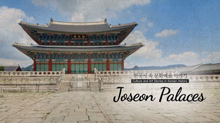 Joseon Palaces08:46
Joseon Palaces08:46 -
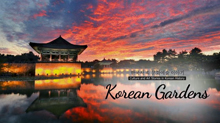 Korean Gardens08:34
Korean Gardens08:34 -
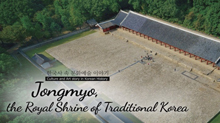 Jongmyo, the Royal Shrine of Traditional Korea09:05
Jongmyo, the Royal Shrine of Traditional Korea09:05 -
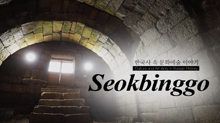 Seokbinggo, or Stone Ice Storage08:18
Seokbinggo, or Stone Ice Storage08:18 -
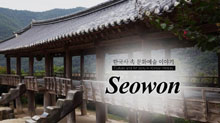 Seowon, a Neo-Confucian Academy08:22
Seowon, a Neo-Confucian Academy08:22 -
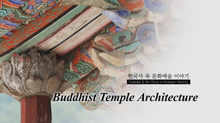 Buddhist Temple Architecture08:28
Buddhist Temple Architecture08:28 -
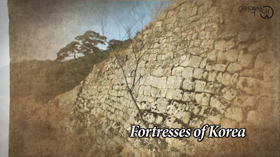 Fortresses of Korea09:12
Fortresses of Korea09:12 -
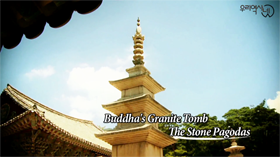 Stone Pagodas07:13
Stone Pagodas07:13 -
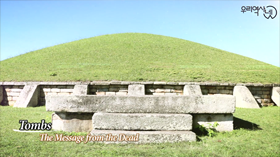 Tombs09:36
Tombs09:36 -
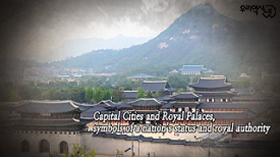 Capital Cities and Royal Palaces08:55
Capital Cities and Royal Palaces08:55 -
 Roof Tiles07:48
Roof Tiles07:48

